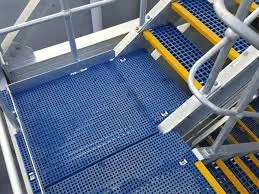
-
 Afrikaans
Afrikaans -
 Albanian
Albanian -
 Amharic
Amharic -
 Arabic
Arabic -
 Armenian
Armenian -
 Azerbaijani
Azerbaijani -
 Basque
Basque -
 Belarusian
Belarusian -
 Bengali
Bengali -
 Bosnian
Bosnian -
 Bulgarian
Bulgarian -
 Catalan
Catalan -
 Cebuano
Cebuano -
 China
China -
 China (Taiwan)
China (Taiwan) -
 Corsican
Corsican -
 Croatian
Croatian -
 Czech
Czech -
 Danish
Danish -
 Dutch
Dutch -
 English
English -
 Esperanto
Esperanto -
 Estonian
Estonian -
 Finnish
Finnish -
 French
French -
 Frisian
Frisian -
 Galician
Galician -
 Georgian
Georgian -
 German
German -
 Greek
Greek -
 Gujarati
Gujarati -
 Haitian Creole
Haitian Creole -
 hausa
hausa -
 hawaiian
hawaiian -
 Hebrew
Hebrew -
 Hindi
Hindi -
 Miao
Miao -
 Hungarian
Hungarian -
 Icelandic
Icelandic -
 igbo
igbo -
 Indonesian
Indonesian -
 irish
irish -
 Italian
Italian -
 Japanese
Japanese -
 Javanese
Javanese -
 Kannada
Kannada -
 kazakh
kazakh -
 Khmer
Khmer -
 Rwandese
Rwandese -
 Korean
Korean -
 Kurdish
Kurdish -
 Kyrgyz
Kyrgyz -
 Lao
Lao -
 Latin
Latin -
 Latvian
Latvian -
 Lithuanian
Lithuanian -
 Luxembourgish
Luxembourgish -
 Macedonian
Macedonian -
 Malgashi
Malgashi -
 Malay
Malay -
 Malayalam
Malayalam -
 Maltese
Maltese -
 Maori
Maori -
 Marathi
Marathi -
 Mongolian
Mongolian -
 Myanmar
Myanmar -
 Nepali
Nepali -
 Norwegian
Norwegian -
 Norwegian
Norwegian -
 Occitan
Occitan -
 Pashto
Pashto -
 Persian
Persian -
 Polish
Polish -
 Portuguese
Portuguese -
 Punjabi
Punjabi -
 Romanian
Romanian -
 Russian
Russian -
 Samoan
Samoan -
 Scottish Gaelic
Scottish Gaelic -
 Serbian
Serbian -
 Sesotho
Sesotho -
 Shona
Shona -
 Sindhi
Sindhi -
 Sinhala
Sinhala -
 Slovak
Slovak -
 Slovenian
Slovenian -
 Somali
Somali -
 Spanish
Spanish -
 Sundanese
Sundanese -
 Swahili
Swahili -
 Swedish
Swedish -
 Tagalog
Tagalog -
 Tajik
Tajik -
 Tamil
Tamil -
 Tatar
Tatar -
 Telugu
Telugu -
 Thai
Thai -
 Turkish
Turkish -
 Turkmen
Turkmen -
 Ukrainian
Ukrainian -
 Urdu
Urdu -
 Uighur
Uighur -
 Uzbek
Uzbek -
 Vietnamese
Vietnamese -
 Welsh
Welsh -
 Bantu
Bantu -
 Yiddish
Yiddish -
 Yoruba
Yoruba -
 Zulu
Zulu
frp sump cover
Understanding FRP Sump Covers A Durable Solution for Modern Needs
In the landscape of modern construction and infrastructure development, the importance of effective wastewater management cannot be overstated. Among the various components that contribute to this, sump covers play a crucial role. One of the most innovative materials used in the manufacturing of these covers is Fiber Reinforced Polymer (FRP). This article explores the numerous advantages of FRP sump covers, their applications, and their overall impact on sustainability and safety.
What is FRP?
Fiber Reinforced Polymer (FRP) is a composite material made by combining a polymer matrix with fibers, such as glass or carbon. This blend results in a lightweight yet incredibly strong material. FRP is highly resistant to corrosion, chemicals, and environmental factors, making it an ideal choice for applications in harsh environments, such as wastewater treatment facilities and industrial settings.
Advantages of FRP Sump Covers
1. Durability Unlike traditional materials like metal or concrete, FRP sump covers possess remarkable durability. They are resistant to rust, corrosion, and chemical degradation, which often plague conventional materials when exposed to harsh environments, such as those found in sewage management or industrial plants.
2. Lightweight The lightweight nature of FRP allows for easier handling and installation. This factor significantly reduces the labor costs associated with transportation and manpower during installation, making FRP covers a cost-effective alternative over time.
3. Customizability FRP can be molded into various shapes, sizes, and colors, offering flexibility in design. This is particularly useful for companies that need specific designs to fit unique sump systems or aesthetic requirements.
4. Non-conductive FRP materials are non-conductive, which means they do not conduct electricity. This property is essential for ensuring safety in environments where electrical components may be present, reducing the risk of shock or other electrical hazards.
frp sump cover

5. Environmental Benefits By opting for FRP sump covers, companies are also making a more sustainable choice. The longevity of FRP means that these covers do not need to be replaced as frequently as their concrete or metal counterparts, which contributes to lower waste and reduced resource consumption.
Applications of FRP Sump Covers
FRP sump covers find their applications across various industries, including
- Wastewater Treatment Plants FRP covers are extensively used in wastewater treatment facilities due to their resistance to corrosive environments and ability to withstand various chemicals present in wastewater.
- Industrial Settings Industries that handle hazardous materials often utilize FRP sump covers to protect against spills and leaks, ensuring a safe operational environment.
- Stormwater Management With increasing concerns about urban flooding and stormwater management, FRP sump covers provide a reliable solution to manage water flow effectively.
Conclusion
As industries continue to evolve and face new challenges related to environmental impact, safety, and efficiency, the adoption of innovative materials like Fiber Reinforced Polymer for sump covers is becoming increasingly essential. The benefits of FRP—its durability, lightweight nature, customization options, and environmental friendliness—make it a standout choice for wastewater management and industrial applications.
In summary, FRP sump covers not only provide a practical solution for managing sump systems effectively but also contribute to a more sustainable future in infrastructure development. With the growing emphasis on safety and environmental stewardship, the shift towards FRP materials is likely to continue, heralding a new age of engineering solutions that marry performance with responsibility.









